There are a few things that stand out when you first look at the case. The first is the smoked glass panels:
They are thick – and therefore heavy. The thickness is a good thing, after all, we accidentally shattered the In Win 805’s glass panels which were much thinner.
The glass is indeed tempered – which we got to prove on the 805. The sticker telling you this is easy to remove. At this point you’ll notice that there are four thumbscrews use to secure the glass:
These are actually larger than the ones used on the 805 which is a bit of a shame, because they stick out further. unlike the 805 thumbscrews, they are actually female threaded rather than male, so the male part sticks out of the case:
From the front of the case the thumbscrews are quite noticeable:
However the beautiful brushed aluminum finish of the front and top are much more likely to distract you as the metal is single piece that wraps around with only a break in the rear of the case:
In the rear we get an indication of the unusual case layout. Instead of the “normal” layout of an i/o plate and pcie slots there is a small access port and a 360/280 radiator mount. The fan cutouts are of a different design to the “normal” grills and we really quite like it. Note that the rear panel is also thick brushed aluminum even though that is likely to be hidden from view. We love this attention to detail:
Thumbscrews can be used with Philips head or flat head screw drivers. The mounting holes for the radiators are recessed because the rear panel is so thick.
Even the cut out holes are bevelled so that you don’t cut yourself on any sharp edges:
Peering through the cut outs we get a glimpse of how the case is layed out:
You can just make out the standard io plate and pcie slots in the interior. In other words the motherboard layout is in a traditional orientation, but it’s simply offset inside the case.
Once you’ve picked up your jaw from the ground over that single piece of brushed aluminum wrapping the case then you’re going to be taking a look at the interesting cutout at the base of the case. On the In Win 904 this “hole” was larger and you can stealth mount an ODD in it. With ODD’s in decline we are glad that this is now smaller. There are now no 5.25″ bays supported at all. We like this and we are glad that In Win is brave enough to not support them anymore. Now the “hole” is there purely to act as an air intake. Just above the air intake are the i/o ports and switches. There are three normal USB 3 ports, and one USB type C connector. There are head phone and mic jacks, a power switch, two LEDs and a switch for the lighting. In our case the switch for the lighting was actually unplugged. We love that a USB type C connector has been used – if you’re buying a case this expensive you want to get one that is future proof. Type C is the future. Our suggestion though would be to have have a ratio of 2:2 rather than 3:1.
As this space is used for an intake there is also a magnetic dust filter underneath that protects your insides from getting ugly. Moving around to the front of the case – there is a simple red strip with In Win text in clear plastic that lights up with LEDs:
The effect is subtle and classy. Alright enough ogling – time to get the panels off:
As can be seen the glass panels are really quite dark. This can be good – for example it has a tendency to hide any minor issues from those of us who are OCD. However it also means that if you want to really see the detail of the build that you slaved over – you’ll need some serious lighting.
That glass is thick – and bevelled along the cuts. Again more details that really impress and give an overall feeling that this is one quality product:
So here’s the overall layout of the case. First off – the motherboard sits in the main central chamber:
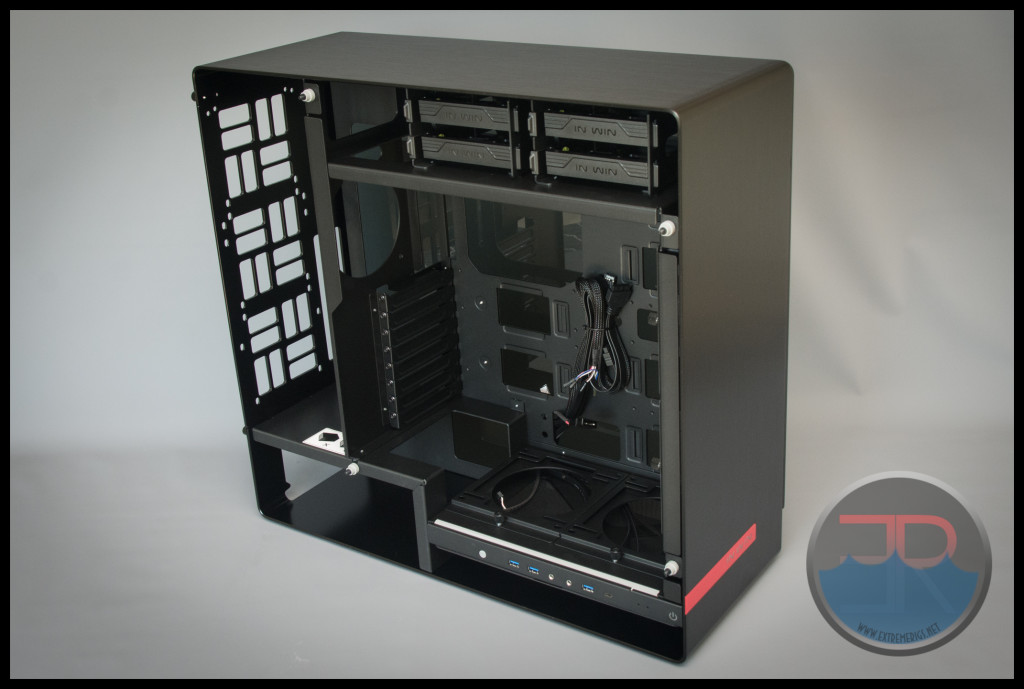 It supports 8 slots which means ATX but not XL-ATX or HPTX – however there is space for wider motherboards like SSI CEB and EATX boards. That 8th slot has a bit of clearance should be OK running a card with a 2.5 slot cooler. However a triple slot cooler is going to run into problems.
It supports 8 slots which means ATX but not XL-ATX or HPTX – however there is space for wider motherboards like SSI CEB and EATX boards. That 8th slot has a bit of clearance should be OK running a card with a 2.5 slot cooler. However a triple slot cooler is going to run into problems.
That “grey” strip above the USB ports is a built in LED light strip. This is great, but in our opinion, the case also needs some lighting in the top of the motherboard chamber too.
Above the lighting strips are two quick release fan/radiator mounts. A single thumbscrew secures each:
Each mount supports 140 and 120mm fans. However you will not fit a 280mm radiator here, only a 240mm.
Through those fan hole cutouts you can see the IO cables as well as the magnetic dust filter which can easily be pulled out:
The magnets are really nice and strong so once “stuck” it really isn’t going anywhere.
In that rear cutout lives the power supply. It’s nice that there are cable (and finger) routing channels for the PSU cables both from the sides but also more directly.
Above the motherboard chamber is a HDD mounting area:
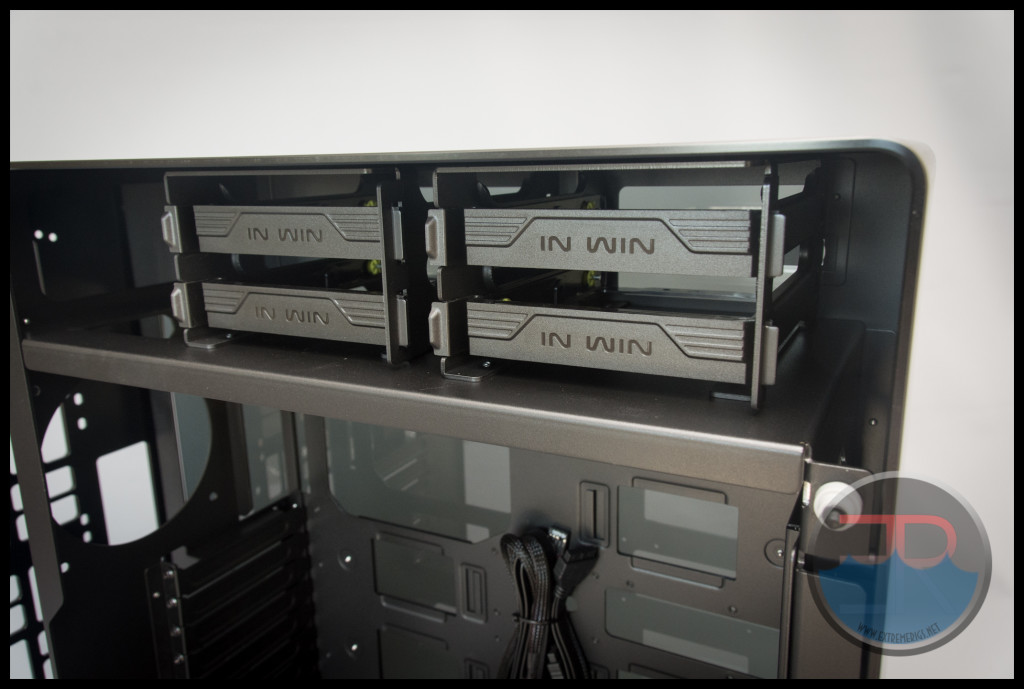
We have made it no secret that we hate mechanical hard drives. They are big, heavy, old technology. These days you can get a 1TB SSD for $250-300. So in our ‘extreme’ opinion hard drives should only be allowed to live in a NAS. Therefore for some users these hard drive bays are a waste of space. In fact most mods that you see with this case remove them and we would suggest doing the same. Indeed it would be an awfully nice place to put a reservoir or radiator (if the top was modded for airflow).
The HDD cages are however In Win’s standard quick release tool free cages. While they are not hotswap type, they are a nice option for those that use HDDs.
At the front of the case are two more quick release fan mounts. Once removed these show a larger fan opening – clearly designed for 280/240 radiators.
However you’ll notice that there is no side airflow into this section. The only air comes from the roof chamber, and from the bottom air intake. The air coming from the roof chamber of course will be warm:
This means that a radiator mounted to the front will not perform well at all. Instead it will perform similarly to the radiator mount in the 805 case which really struggled to get any cool air at all. We would suggest simply mounting fans or pumps/reservoirs here and instead using a bottom mounted 240 for an intake radiator.
The rear of the motherboard chamber also as a mounting point for a 120 radiator – and usefully it also has cutouts for tube routing. This is a nice feature, but a surprising one. After all I would assume that anyone buying this case is definitely going to be mounting a radiator in the rear 360/280 mount.
Therefore an extra 120 is going to do little except feed warmer air to the large rear radiator. It’s not a problem, just of little benefit. We’d suggest at most putting a fan here and not a radiator.
The rear chamber is deep enough to fit a 60mm thick radiator with push and pull fans. This is great but bear in mind that too thick a radiator may make plugging cables to your motherboard and graphics cards harder.
A thinner radiator – like this 38mm PE and a single set of fans gives tons of space for cables and tube:
The rear of the case has a ton of cutouts for cable routing. In addition it also has 6 quick release SSD mounts:
These are great, and we love that a multitude of SSDs can be hidden with these.
Note that the tighest part of the cable routing will be close to the PSU, and so using the bottom right SSD mount is going to severely constrain your cable routing. We learned this the hard way:
While the motherboard chamber can fit large boards, you can choose which standoffs to fit so as to use a smaller board too:
Also of note here are the cables coming from the IO panel:
While generally black or sleeved, some of the sleeved wires are colored and are not sleeved all the way to the end. In addition the sleeve is a bit loose letting those colors through. This is disappointing, and those with OCD will need to fix this.
As usual with In Win – the IO plate is not surrounded on all four sides. This gives flexibility at the expense of security. However unlike the H-Frame Mini, the IO plate is still gripped quite firmly on two sides:
Interestingly unlike most cases – once a PCI backplate cover is removed there is nothing but a hole left. This means that fat tube can easily be routed through these if they are left empty.
Lastly – the case feet – these are thin strips of rubber:
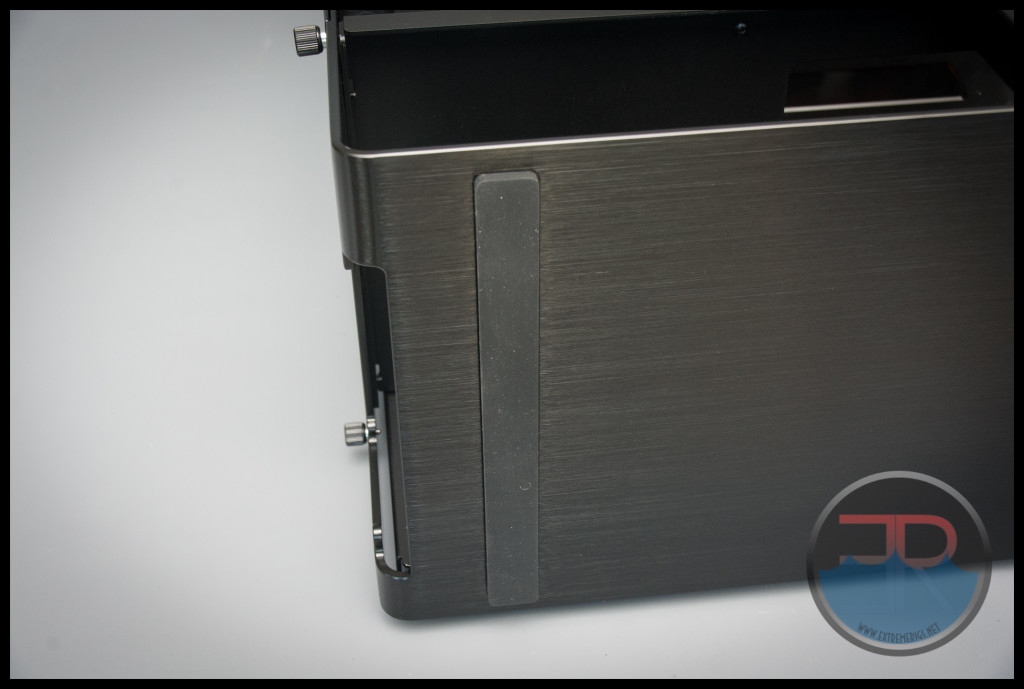
They do the job – primarily not to scratch the surface the case rests on (and also to not damage the case), but are too thin to significantly reduce any major vibration.
Now let’s get some test builds done and check the cooling performance…







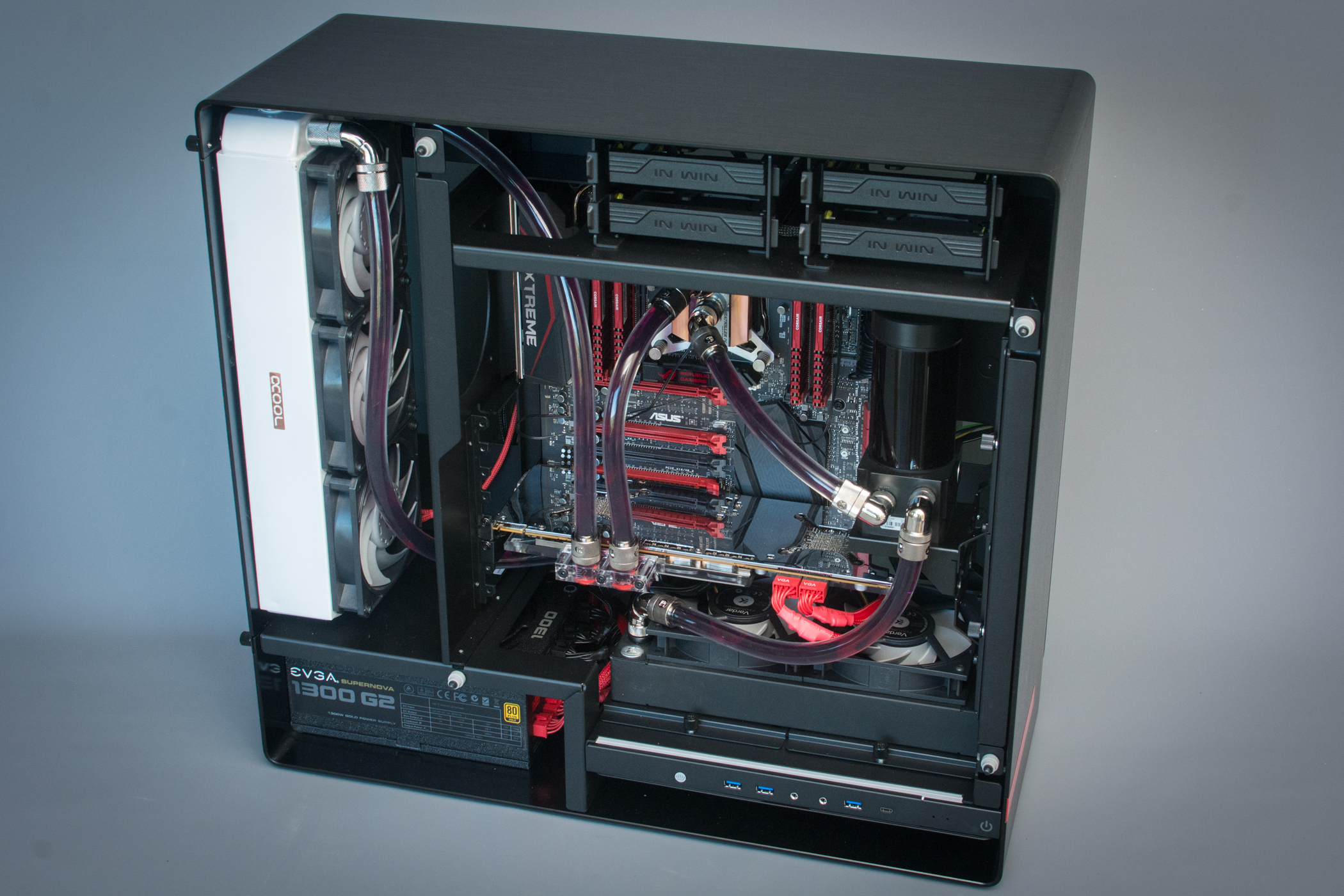
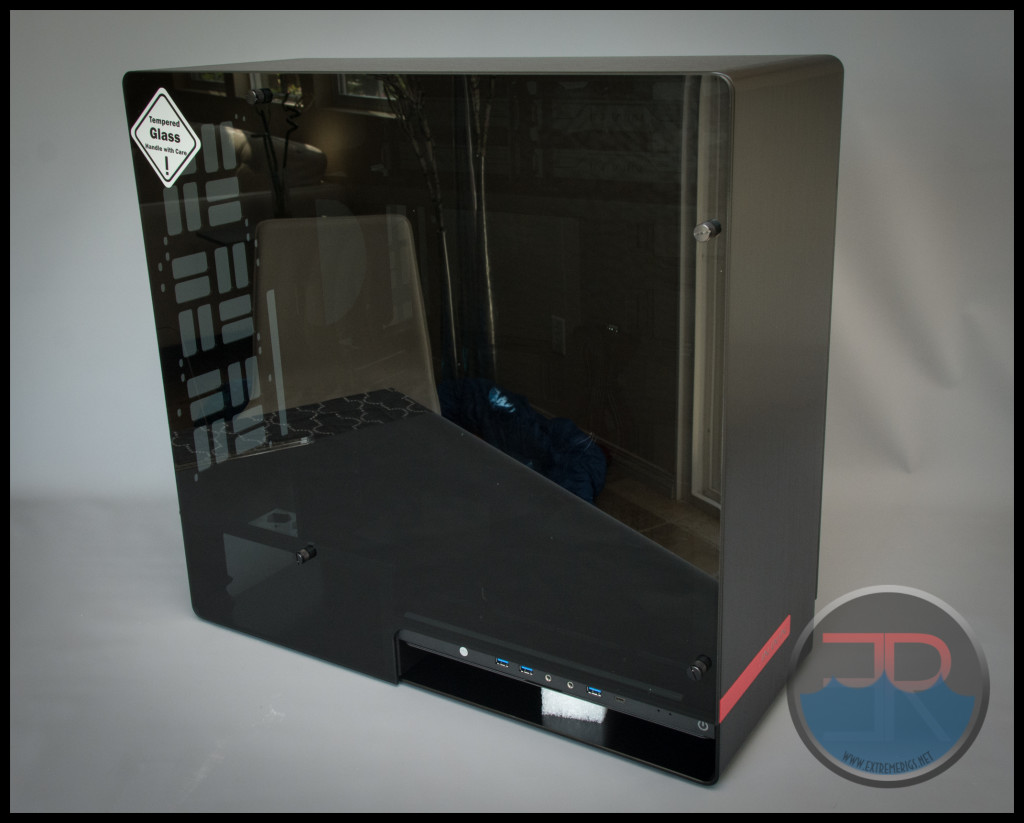
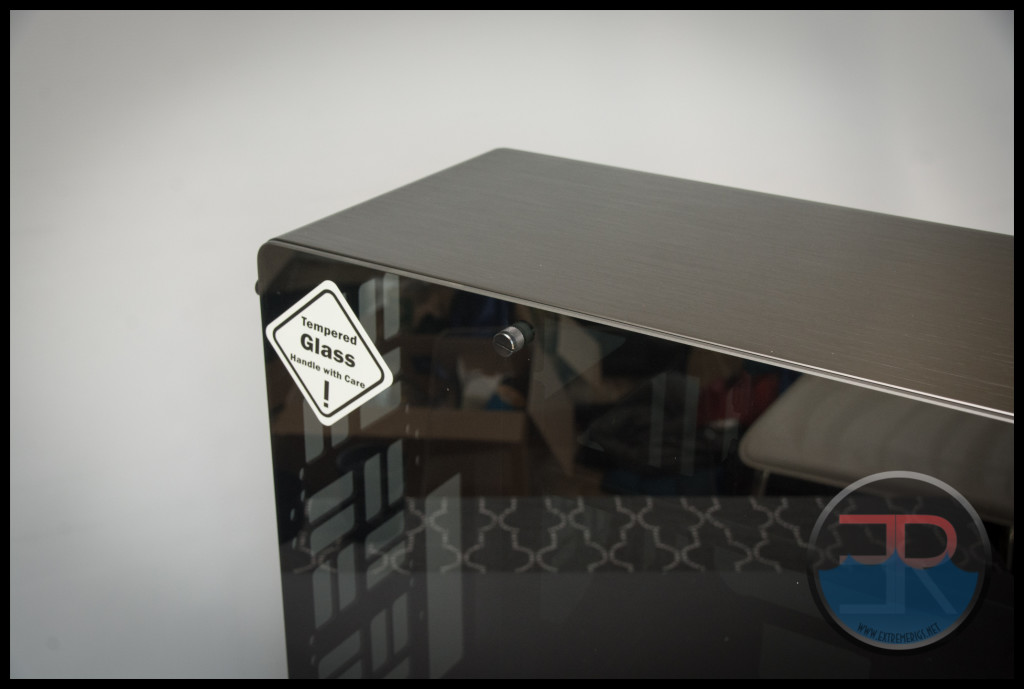
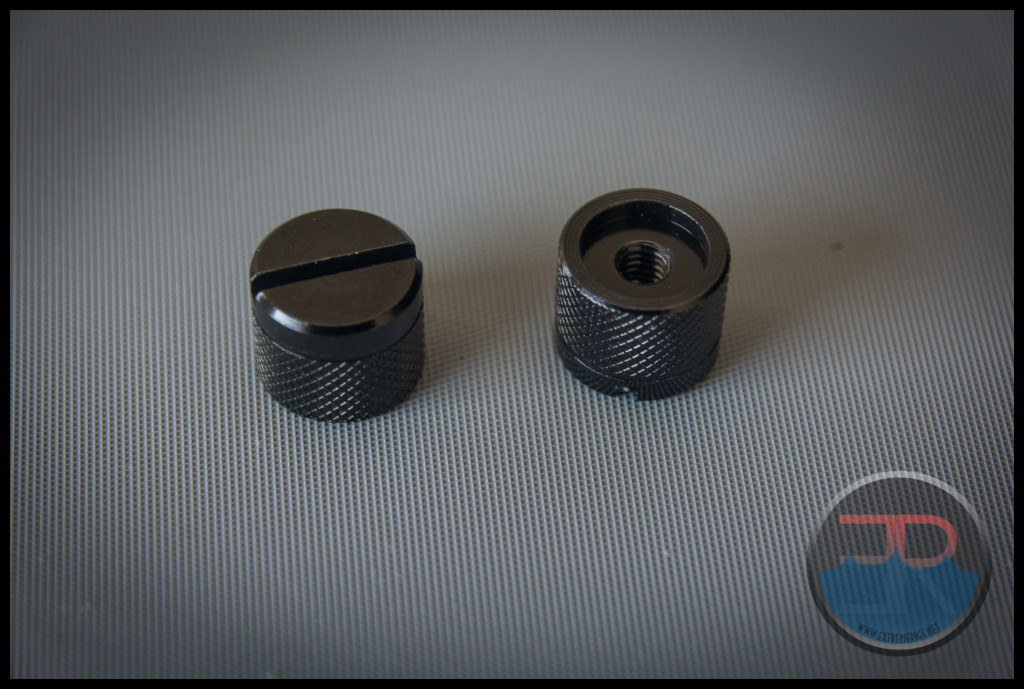
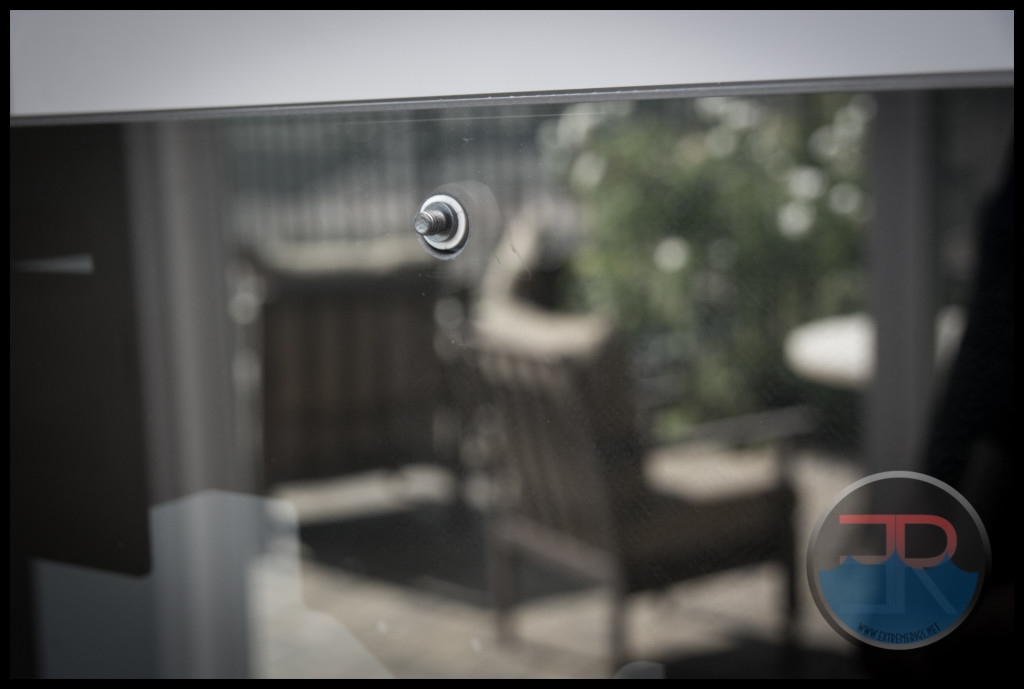
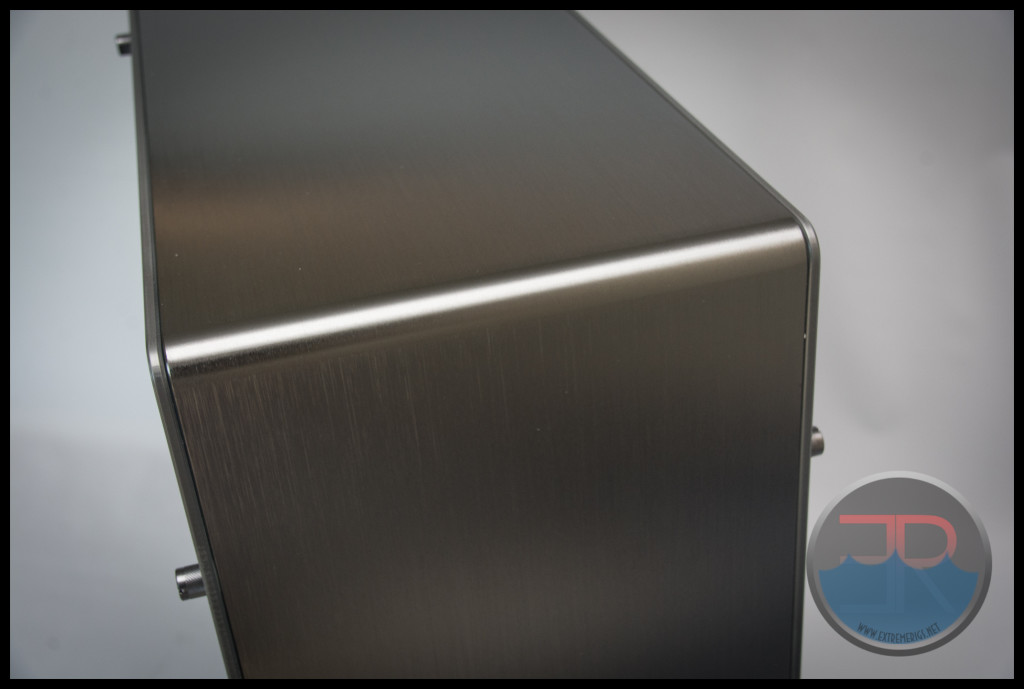
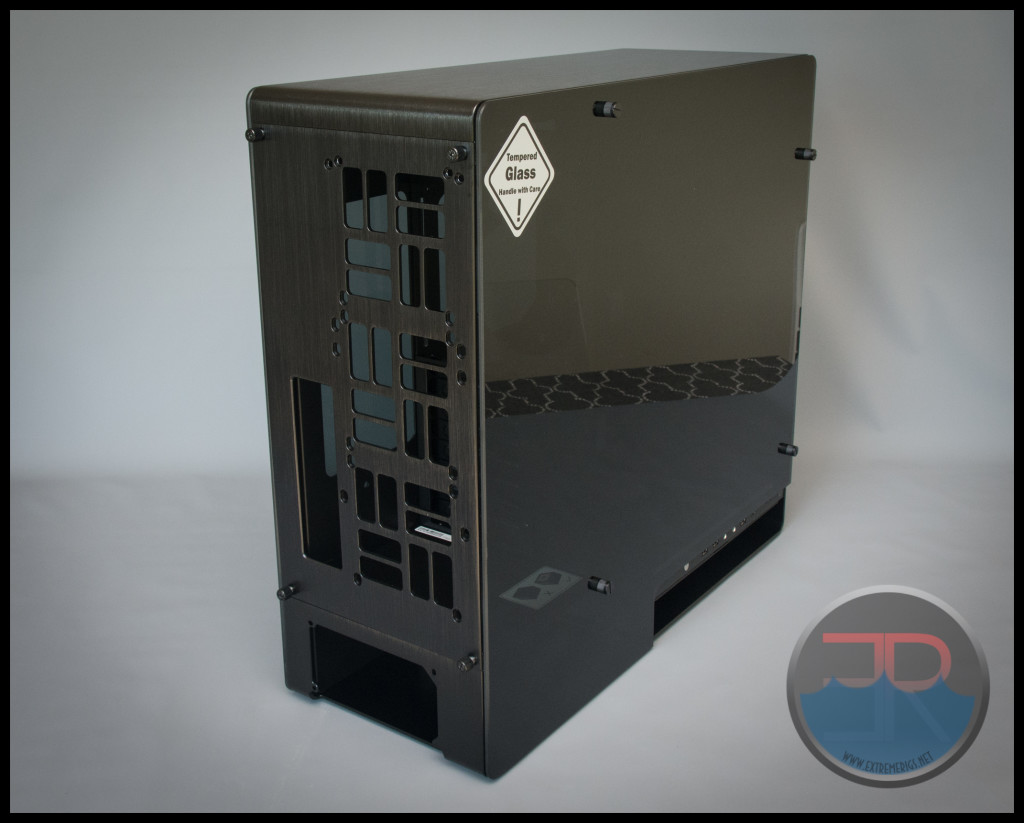
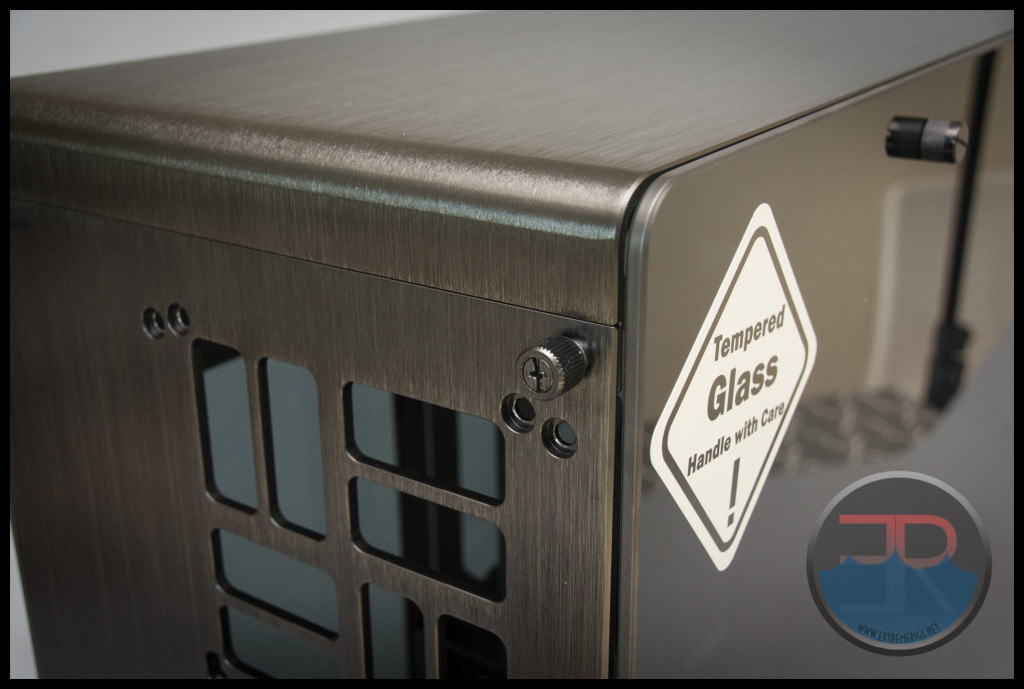
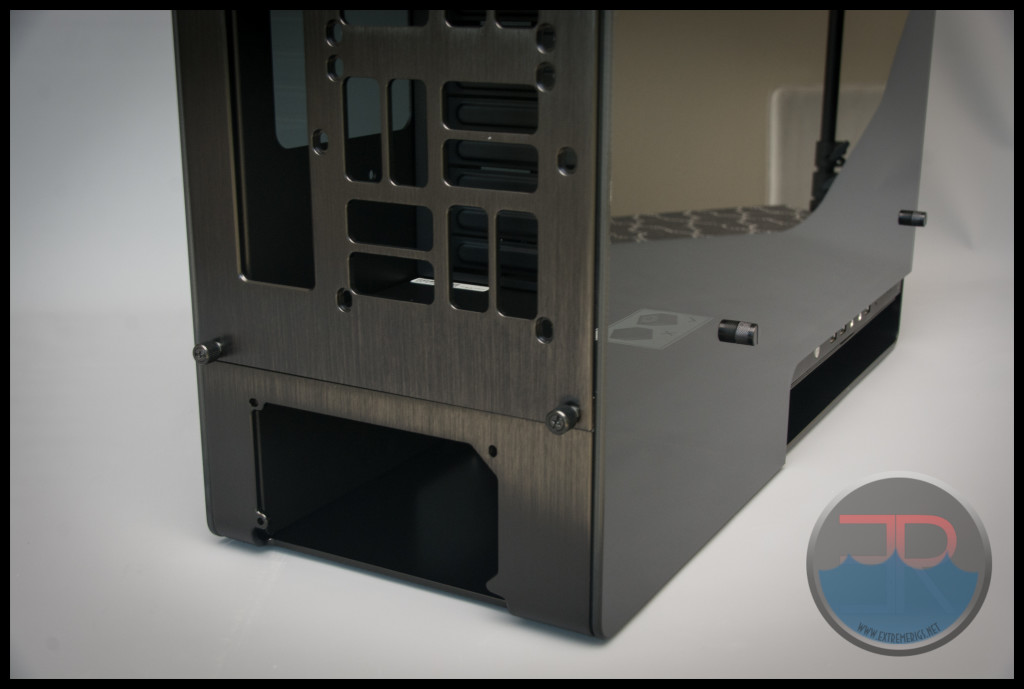
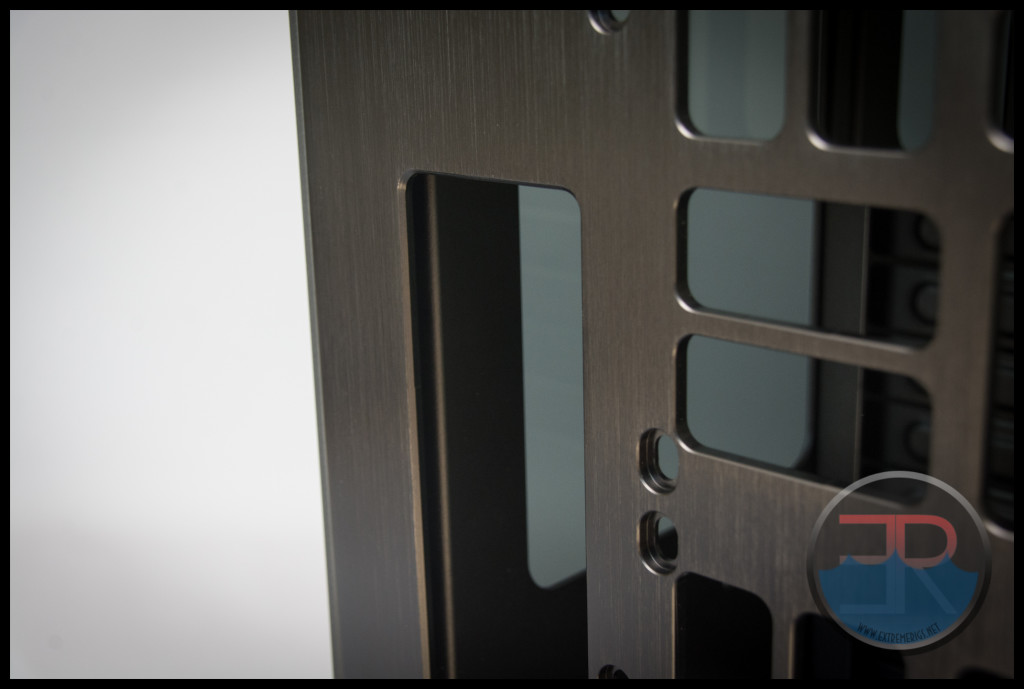
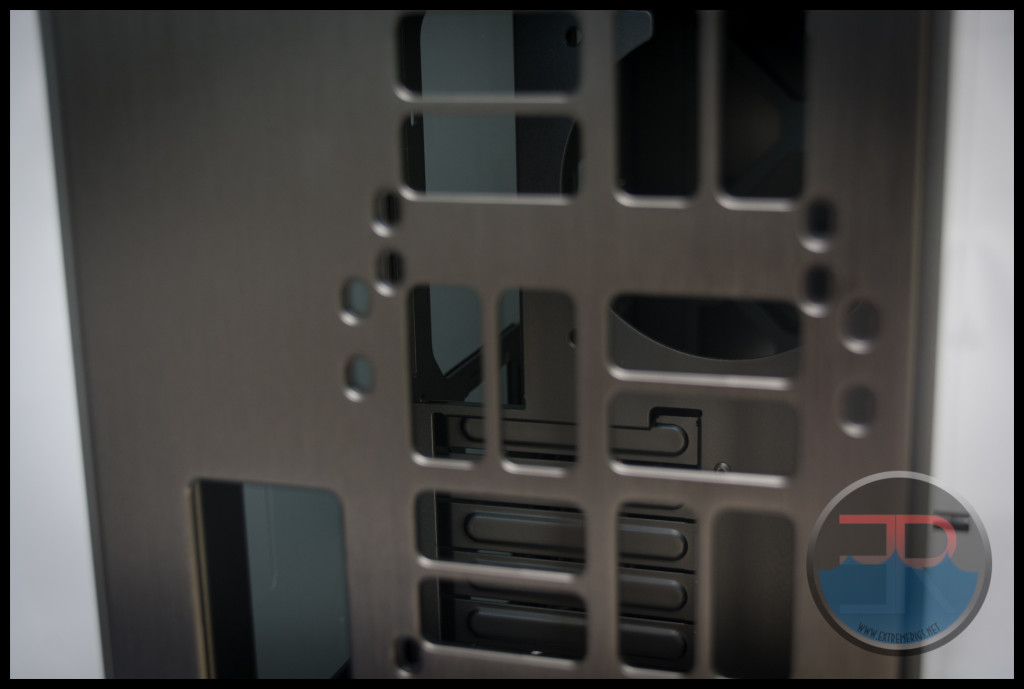
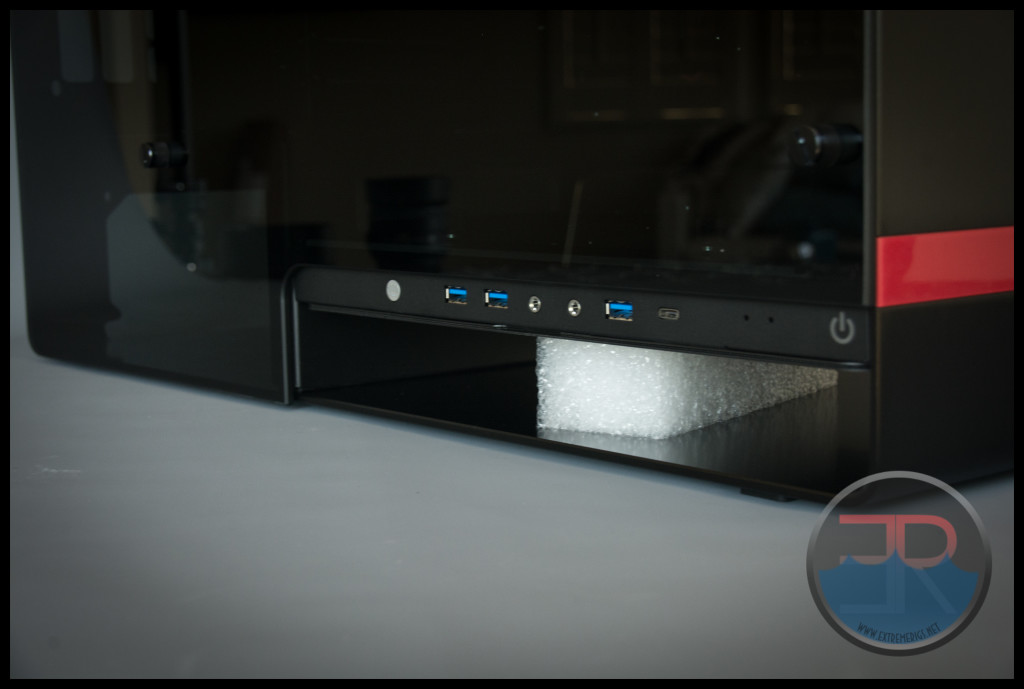
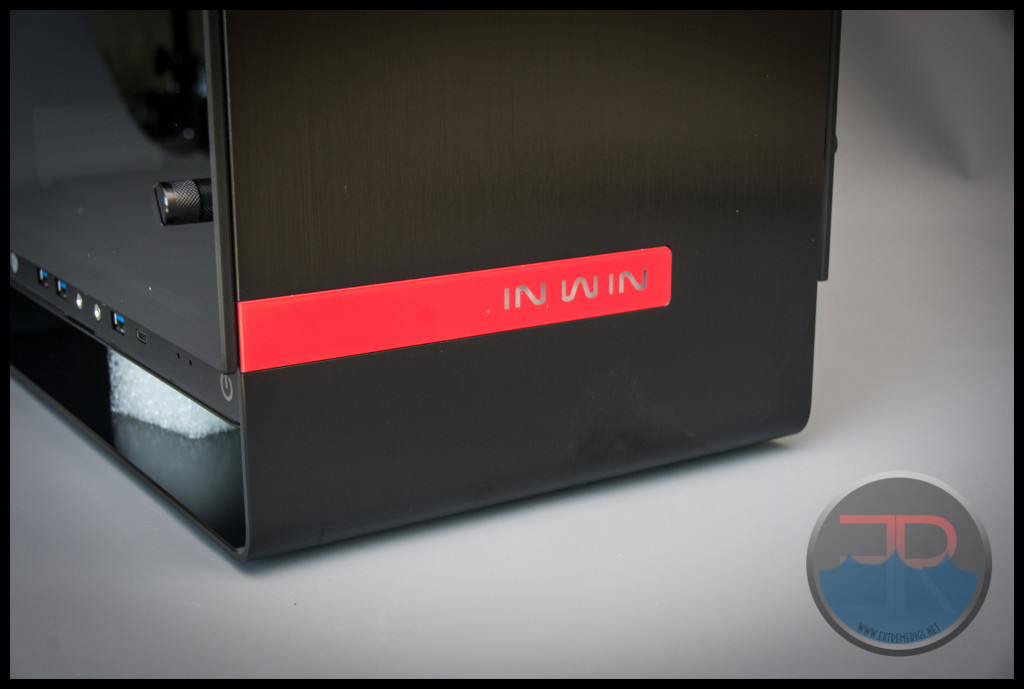
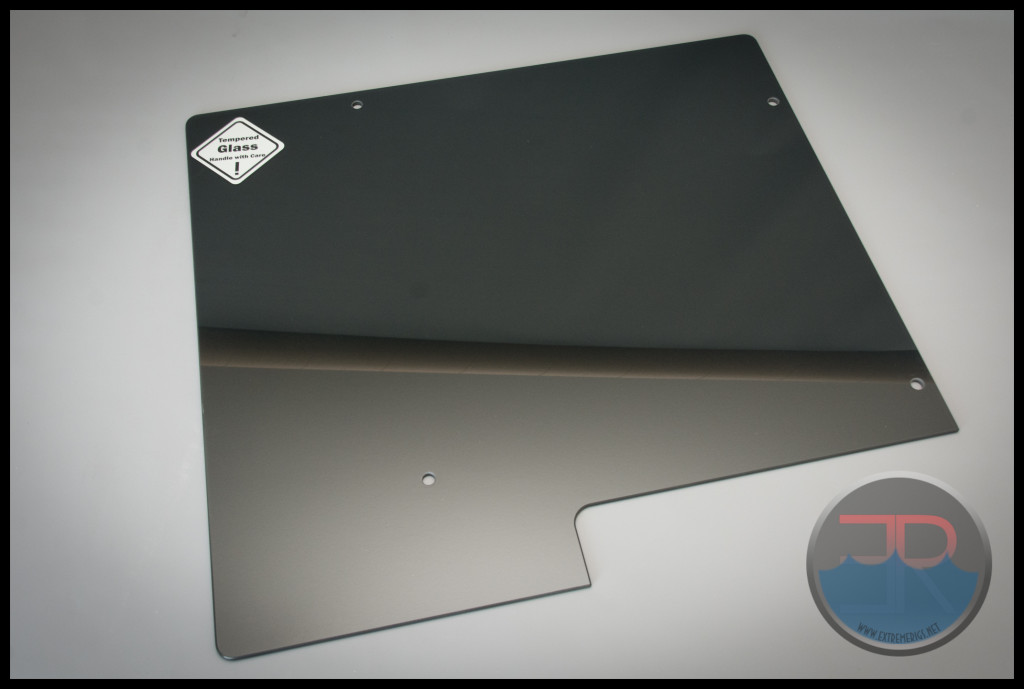
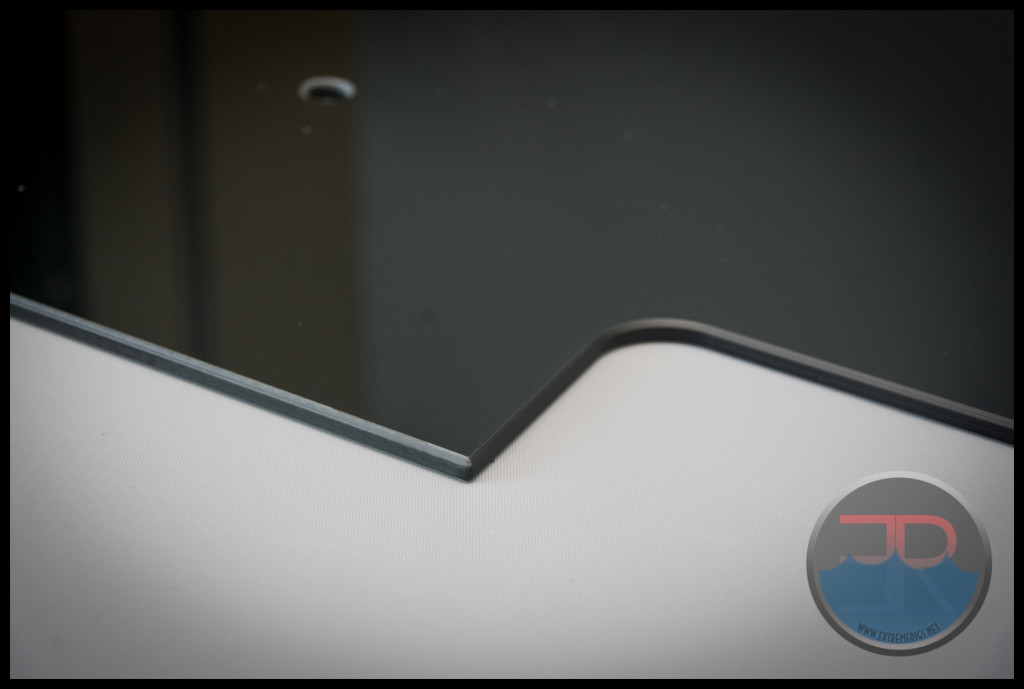
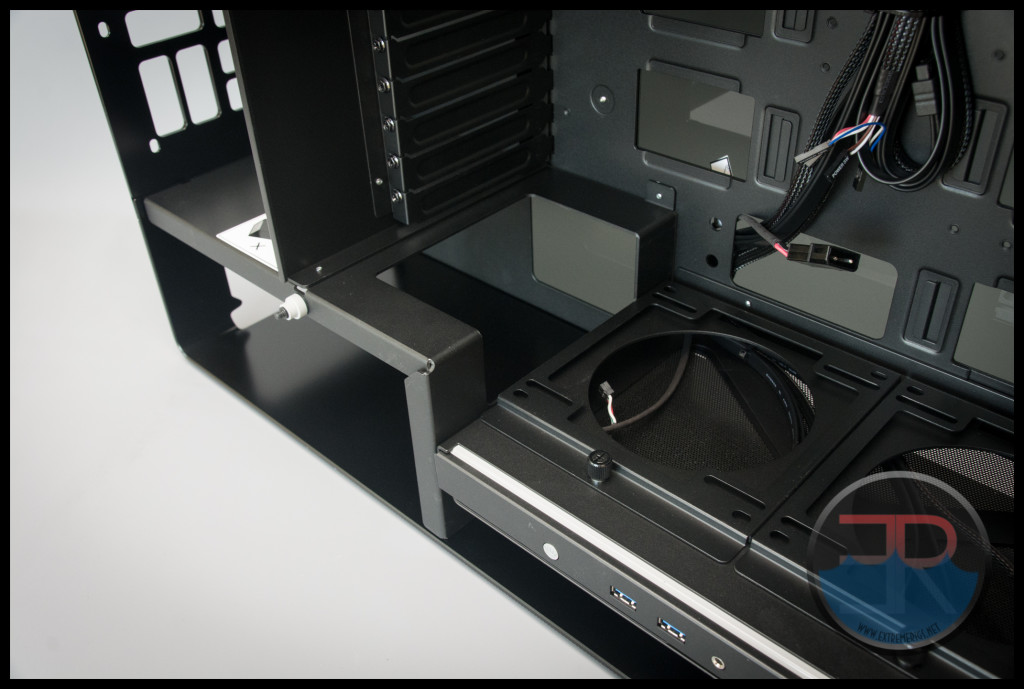
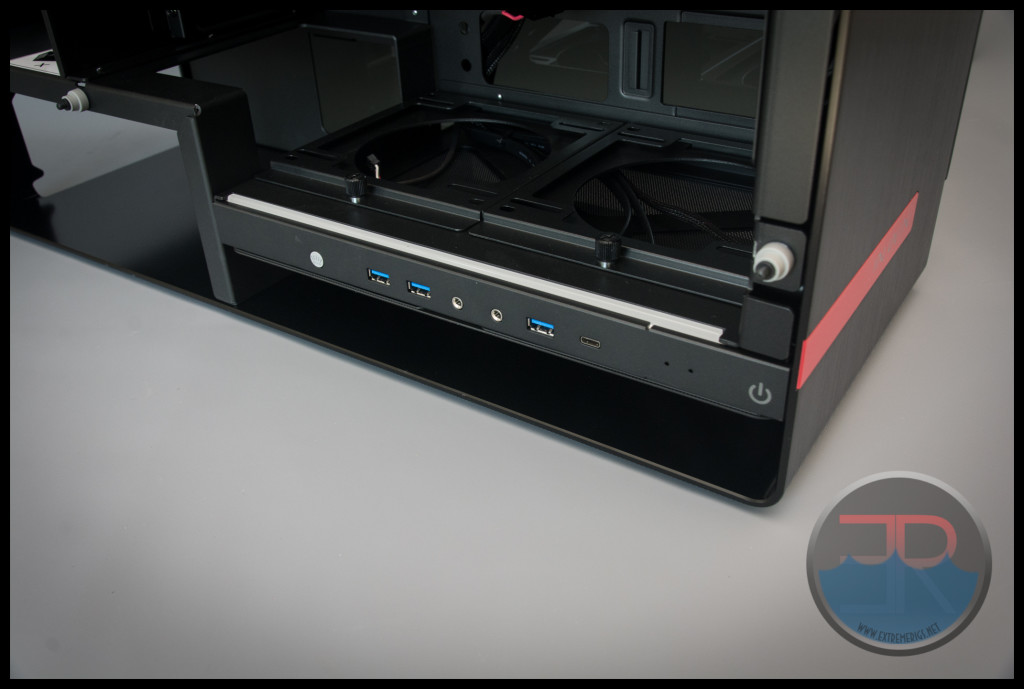
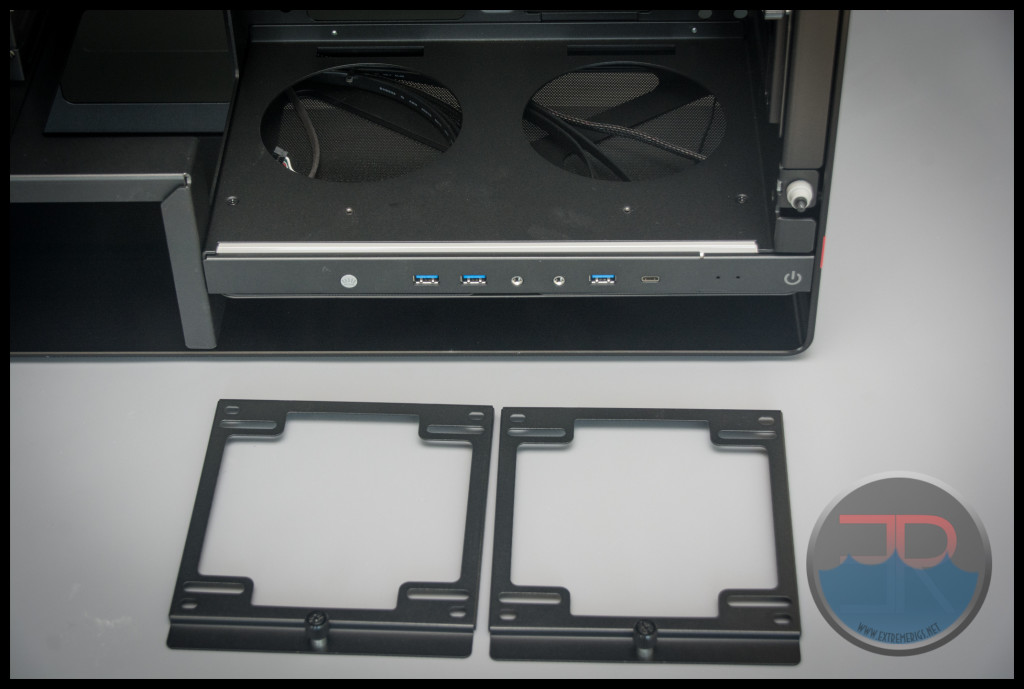
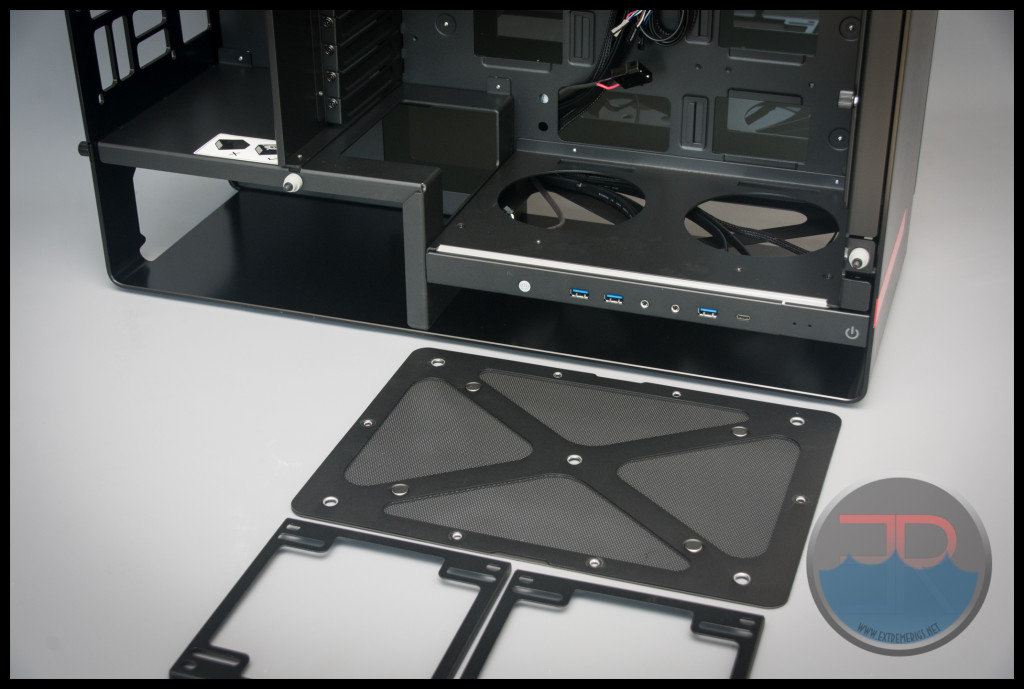
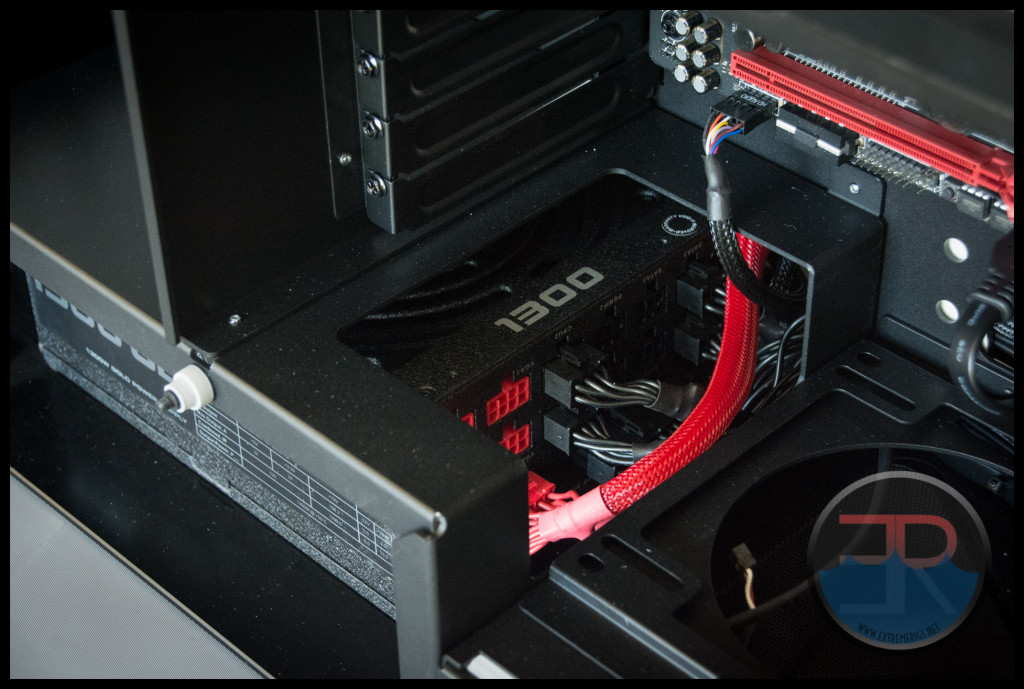
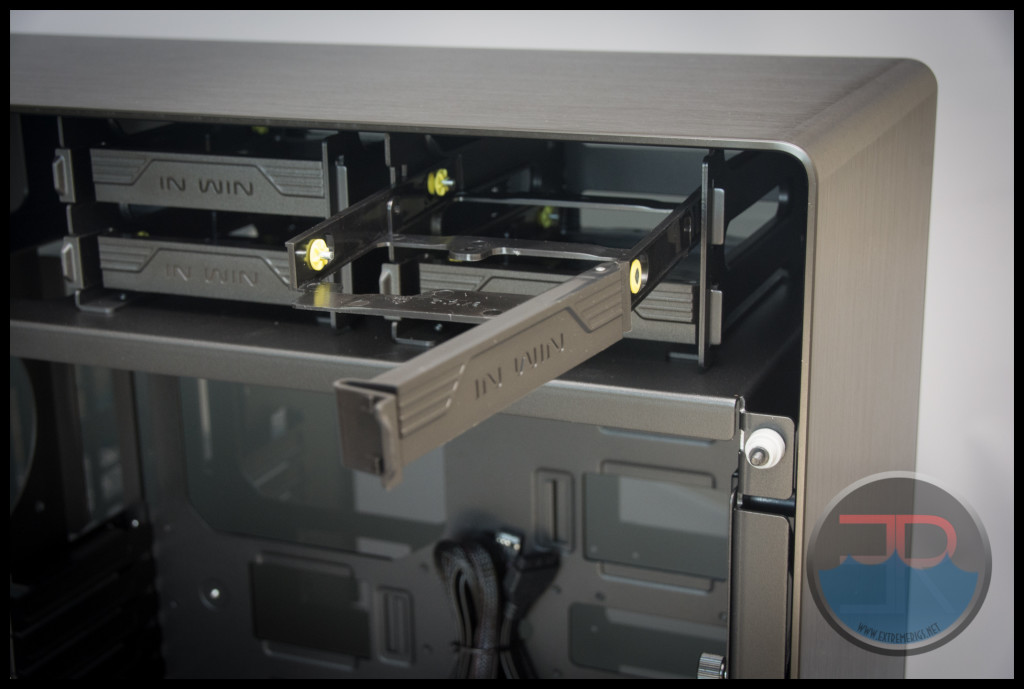
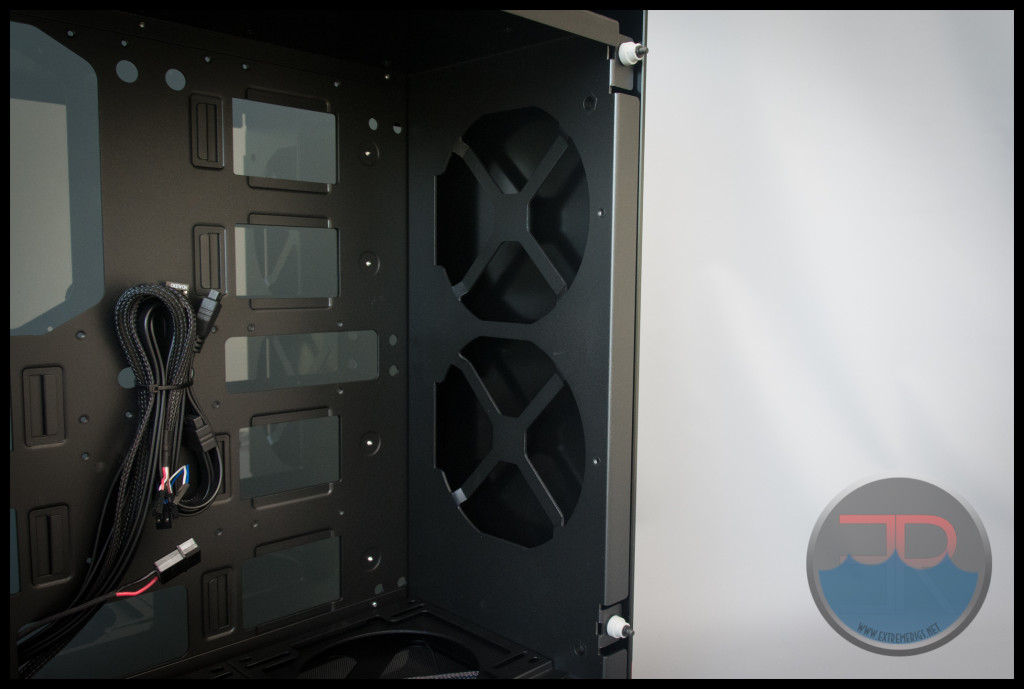
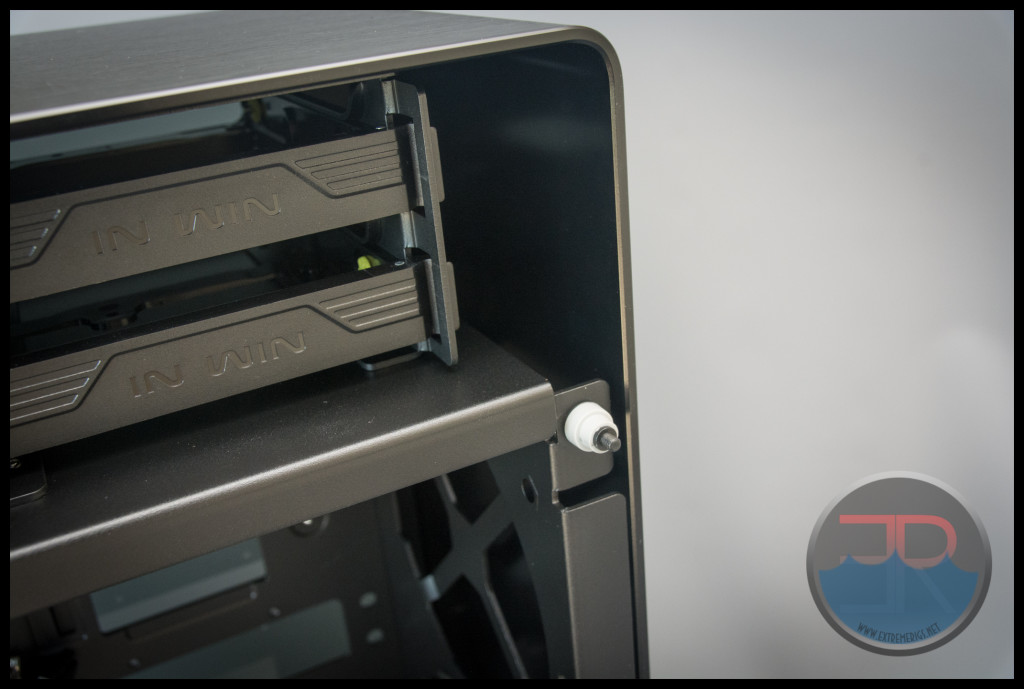
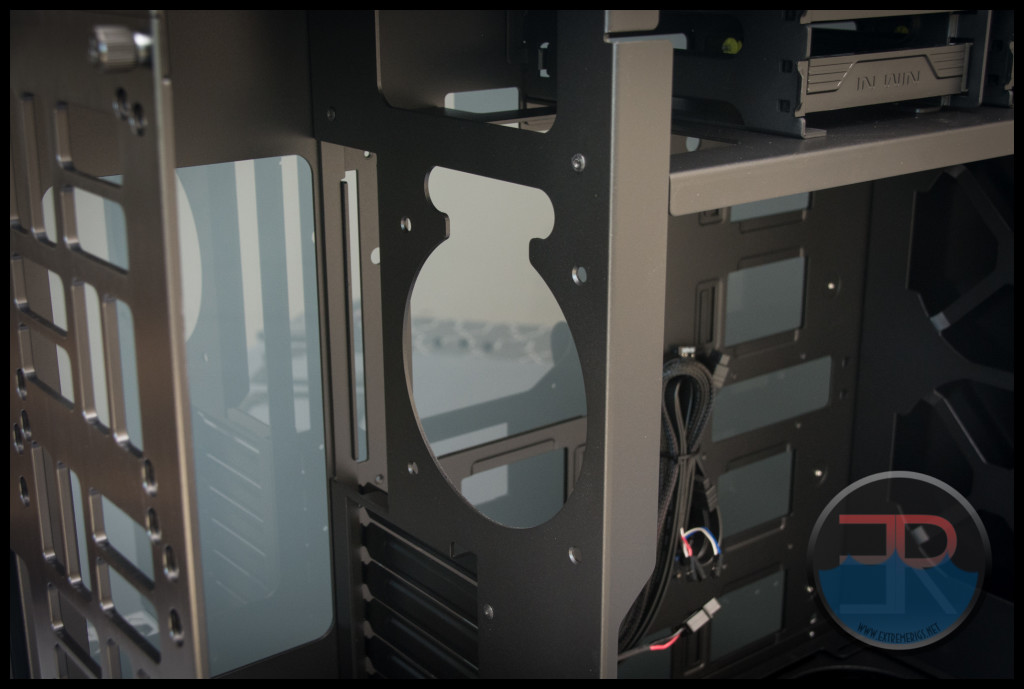
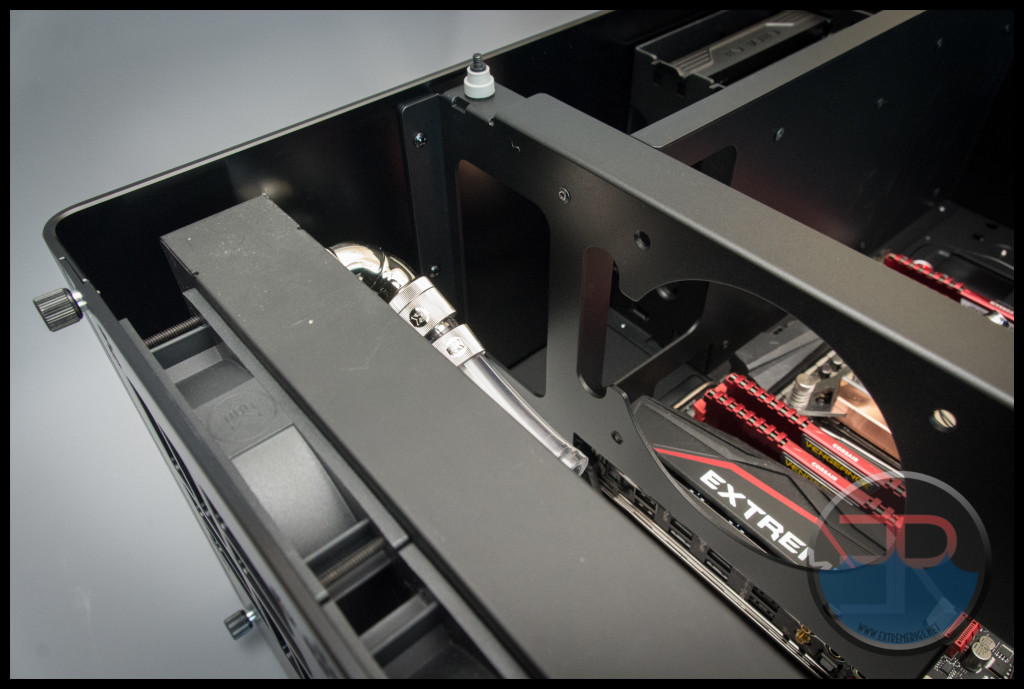
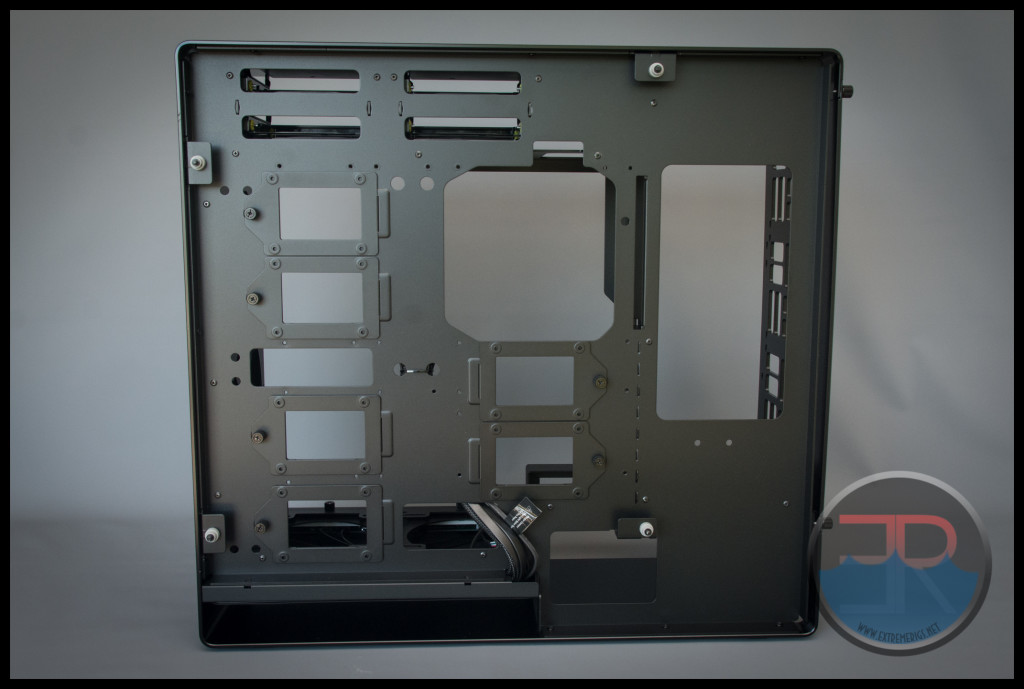
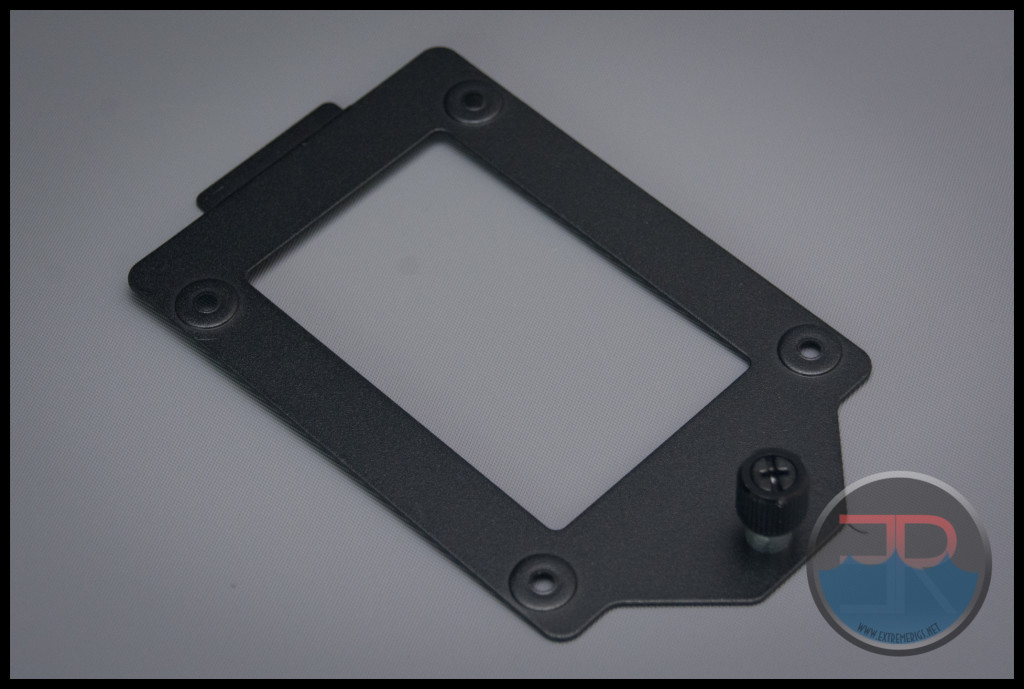
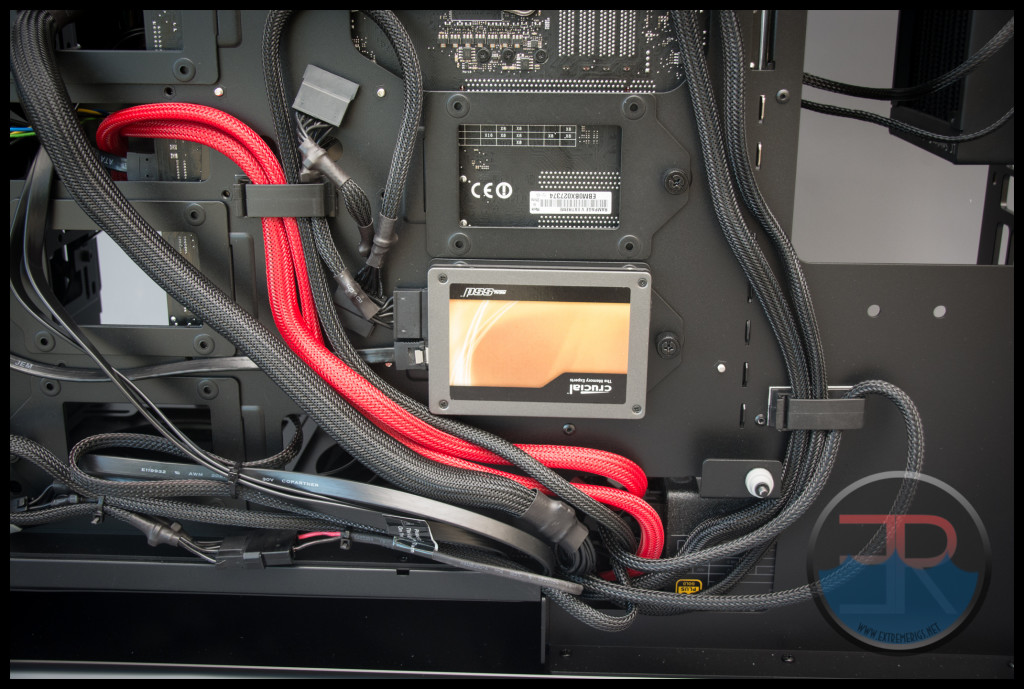
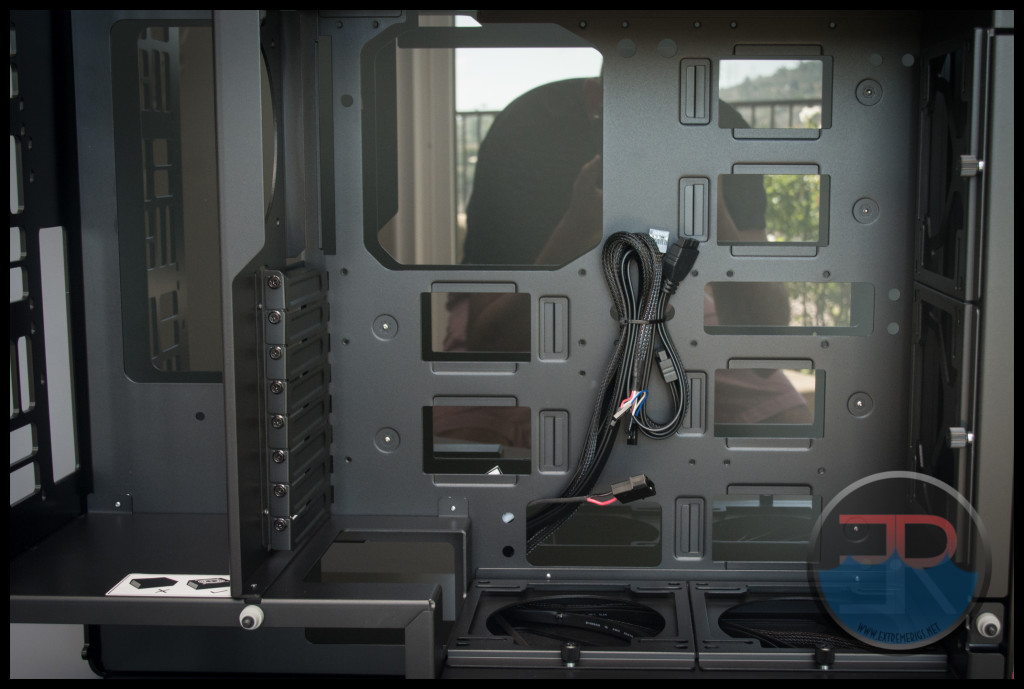
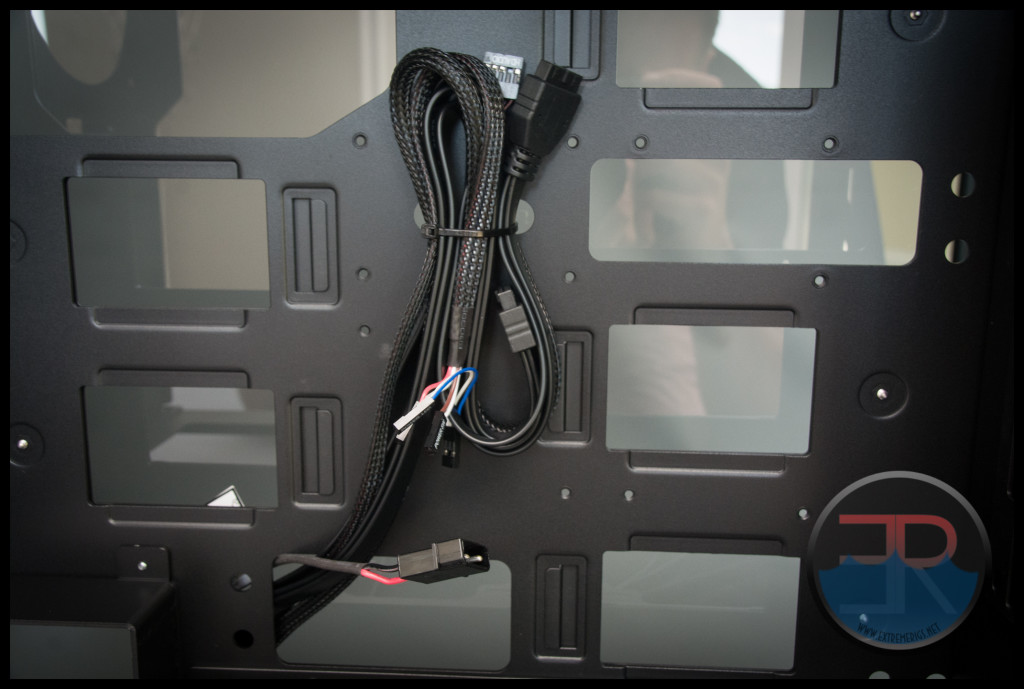
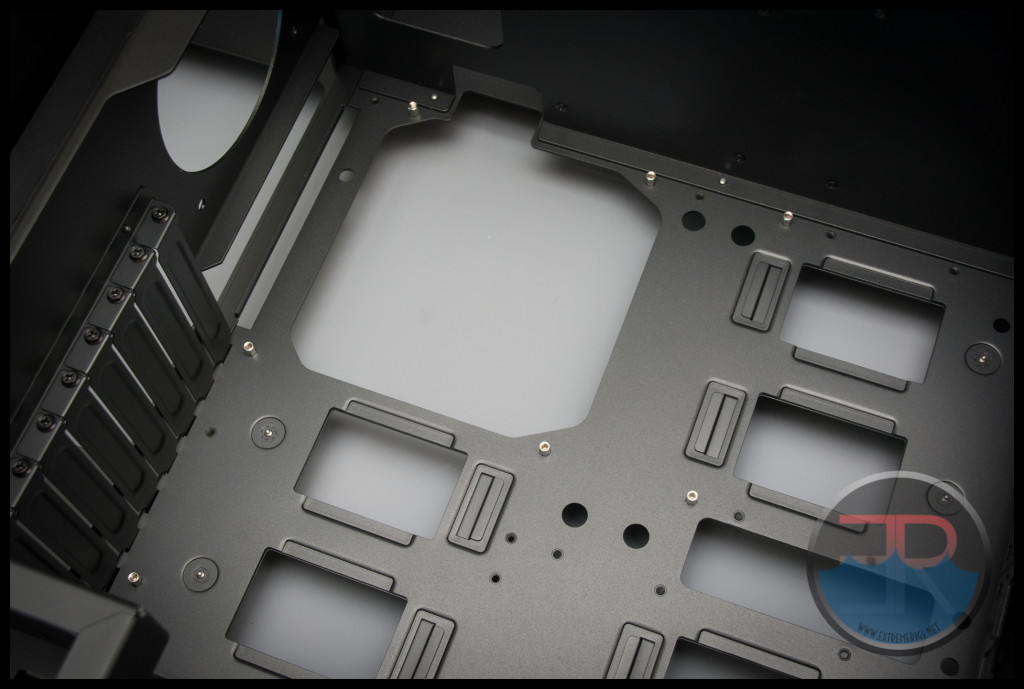
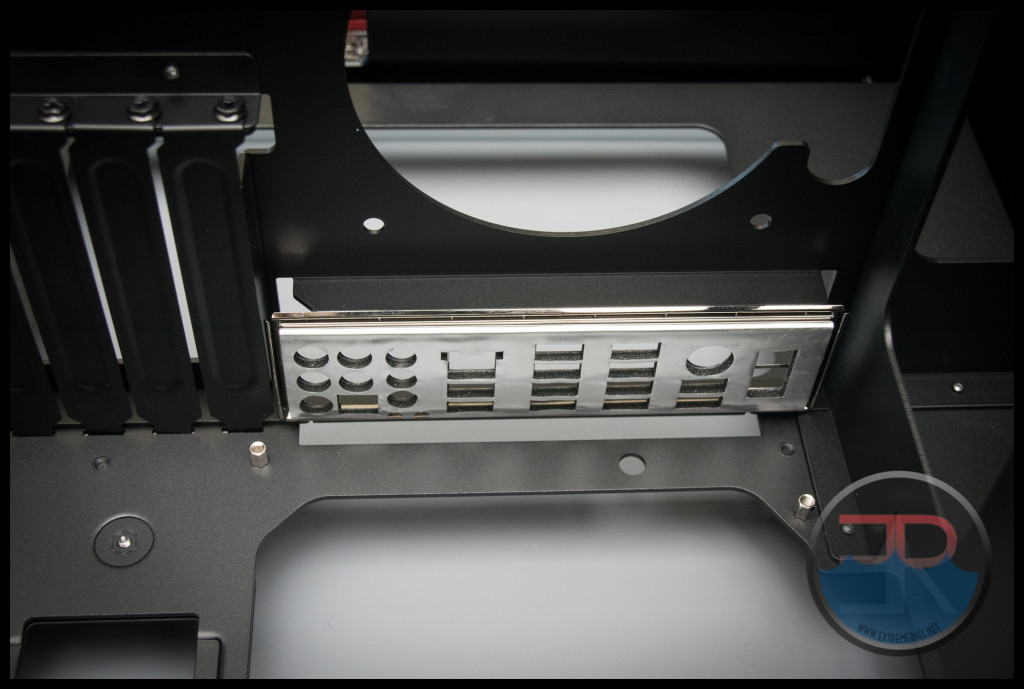
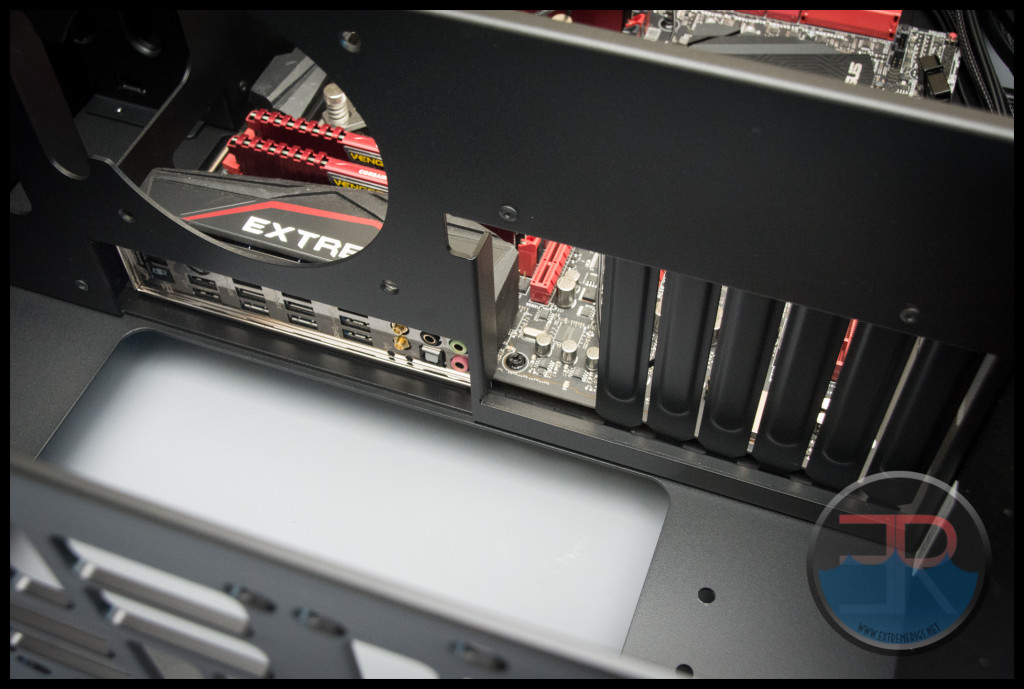



That’s a very nice case and I’m probably going to build by next computer with that. But I have 2 questions.
I’m going to have 2xMSI 980 Ti LIGHTENING SLI in the computer, which is a tri slot card. What exactly is the problem that I will run into if I mount one of them at the lowest 2 slots? Is is possible to stuck it in there with some slight mods?
Also, is it possible for me to mount the PSU in the HDD compartment at the top? Thanks
If they are a full three slots then no, if they are 2.5x then they might work 🙂
PSU, haven’t measured, but yes maybe, worst case you might have to mod it a bit 🙂
Thank you for this review. I actually ordered this case prior to reading but you gave me some ideas for designing my loop. Question – how would I remove the HD bays – they take up space (as you noted) and it would be great for the reservior.
I believe they screw in from the underside, i.e. the top panel of the motherboard chamber 🙂 I’m out of the country right now so can’t check sadly.
I am actually building on one of these cases now. I have two questions;
1. Is the IN WIN front logo supposed to light up? I can’t figure out if I have one of the LED plugs plugged in wrong or if it doesn’t come on until after post or… not at all. My Side LED works with all of its flashing glory.
2. What are the clearances on the top and bottom of the Main Motherboard Bay with a 280mm radiator? I’m attempting to put a custom water reservoir on the bottom that comes flush with the PSU cover.
1. – Yes – although my side LED strip had managed to unplug itself in shipping, so you may want to poke around where all the wires come out to see if you have a loose cable in there.
2. top and bottom? Do you mean the side of the board? The bottom I think you’d be best off with a very slim/narrow 240 at the bottom. I was able to fit an EK PE radiator in there, but that’s really the limit and it was already causing some interference getting in the bottom cables to the motherboard. If you want an easy life I’d suggest something like an EK SE radiator (narrow/slim) or a Hardware Labs Nemesis GTS N series (narrower version than regular GTS – Same as Bitspower Leviathan Slim). For the front mounted 280 – you won’t get a lot of air to the rad so the size isn’t critical and the space you have for it also depends on if you’re getting a super long GPU or also trying to mount a Pump in there. If you’re not running a super long GPU or pump in that area then my guess would be that a 60mm with push only fans would be ok. Let us know how your build goes!
Hi, am in the processing of designing my own 909 build, and I was wondering -> is there room for a push/pull configuration in the back radiator block with a 60mm thickness radiator?
I was thinking it looks quite tight, but if you abandoned the bottom fan (where the gpu might be), you might be able to get away with it… thoughts?
I haven’t measured it but yes I’m pretty sure you can do 60mm with push/pull 🙂 The review has a 60mm UT60 in there and there’s definitely space for a 2nd row of fans. Worse case you might need some cable adapters I suppose 🙂
I appreciate the response; I’ve since put in my radiators/reservoirs into my build. I’ve got an ek-xres 100 mounted horizontally in the empty space near the drive cages. My Msi gtx 1080 Seahawk ek x has about a 25mm clearance from CE 280 front mounted rad and fans. I’m in the process of custom making a reservoir that will sit in the 185mm space over the USB ports. I am very interested in seeing the results of the restricted airflow in the front of the case; in waiting on the ML140s from corsair to release in the US.
Comments are closed.